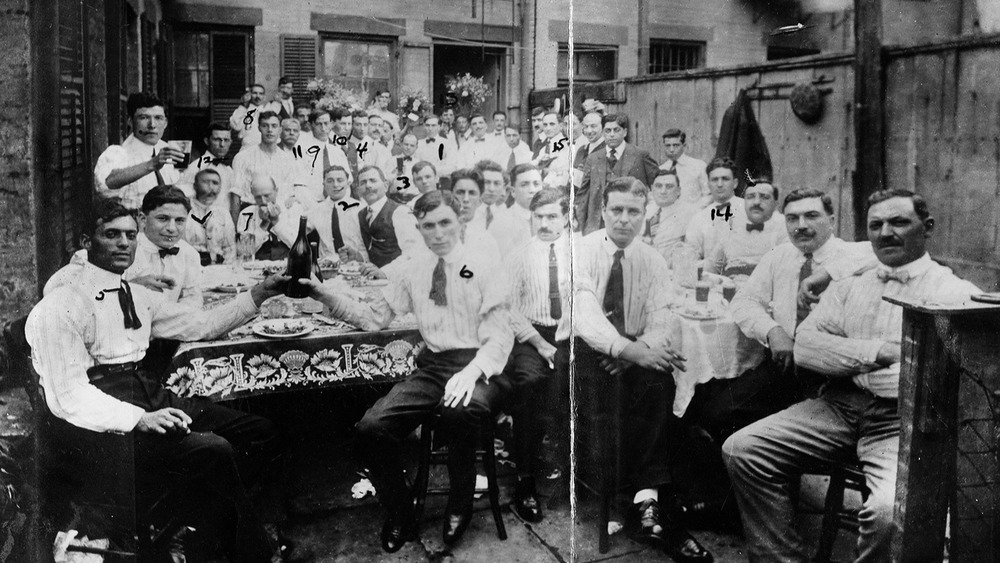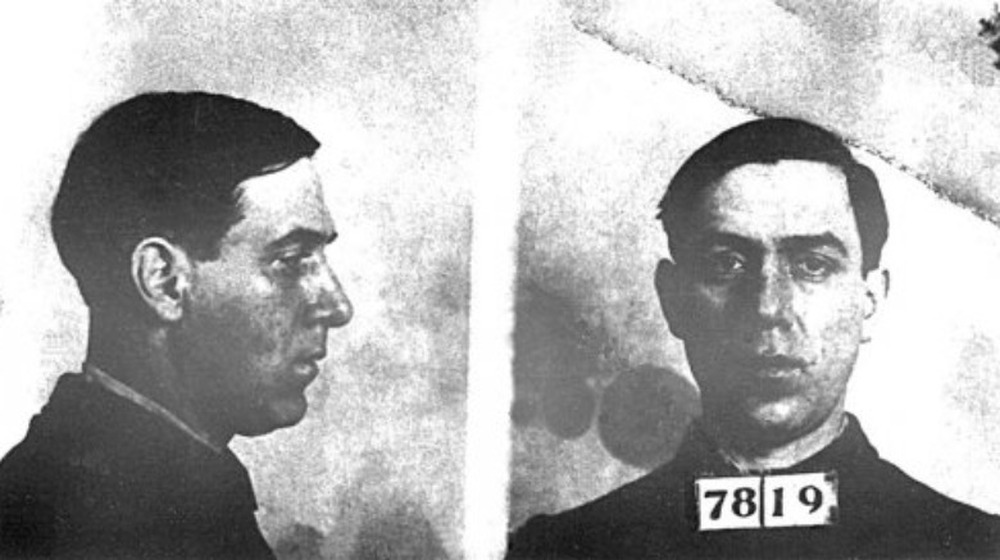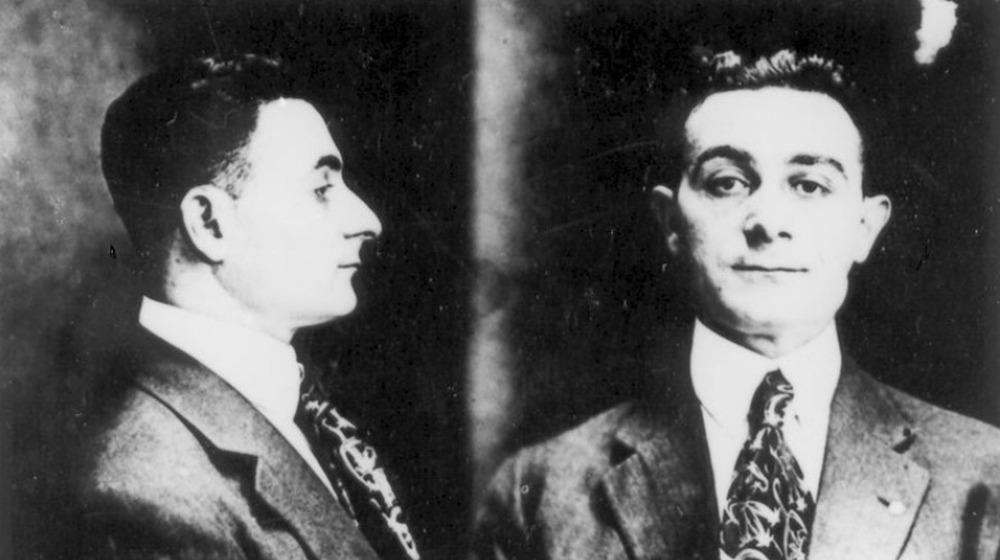This Is What Really Happened During The Mafia-Camorra War
The turn of the 20th century saw millions of Italian citizens migrate to the United States, many of them settling in New York City. And among those millions were some who belonged to secret societies in Italy, criminal organizations under various names and structures. Two of these organizations were the Mafia, from Sicily, and the Camorra, from Naples and elsewhere in the Campania region. And there's a reason you've heard of one, but may be scratching your head about the other.
According to All That Is Interesting, the Mafia and the Camorra started out with rackets that didn't intersect, which avoided strife between them. The Mafia was into extortion of legal businesses, offering protection (from, among other threats, itself) to merchants of ice, coal, and groceries in exchange for a cut of the profits. The Camorra, on the other hand, ran all the seedy, illegal trades: drugs, prostitution, and gambling. The arrangement worked for a little while, but in 1913, the Mafia began to want a cut of the Camorra's game. The founder of the first New York Mafia family, Guiseppe Morello, went to prison in 1910, and his successor, Nick Terranova, decided he wanted to get in on the gambling business. He would initially team up with the Camorra to go after another gambling ring leader, but that friendship wouldn't last.
The Mafia and the Camorra turned on each other and went to war
Terranova set his sights on a gambling ring not run by the Camorra, but by a man named Joseph DiMarco. He ordered two attempts on DiMarco's life, but despite his henchmen hitting their target, DiMarco survived both. So Terranova went to the Navy Street Camorra gang, led by Alessandro Vollero (pictured above), to ask for help with the job. According to Gang Rule, the Navy Street gang got to DiMarco on July 20, 1916, killing him and his friend Charles "Nine-Fingered Charlie" Lombardi at a card game. The other eight players left in such a hurry that the police found their hats still hanging on the wall.
The death of DiMarco put the gambling racket on the city's East Side in the hands of the Mafia, but Pellegrino Marano, the head of another Camorra group, had hoped to form a syndicate of mutually beneficial Italian gangs. In his 2011 book The First Family: Terror, Extorsion, and the Birth of the American Mafia, Mike Dash wrote that Marano was not happy when Terranova didn't want to share. "I will show them who Don Pellegrino Marano is," one of his men recalled him shouting in rage. "I will have them all killed."
So Marano set up a meeting with Terranova and other Mafia bosses under the pretense of talking things out. Instead, they shot Terranova and the one other boss who showed up, and the Mafia-Camorra War was on.
The Camorra was winning the war against the Mafia, at first
As All That Is Interesting notes, the killing of Terranova and the other boss had taken the Mafia aback, and Marano took advantage of the confusion. He had his Camorra hitmen take out six other Mafia members, and it appeared as though he had the upper hand, despite having fewer numbers and resources. But the Camorra had trouble getting extortion payments out of local merchants, many of whom felt that the Mafia would soon return to protect them, so Marano and Vollero continued to hunt down other Mafia bosses and soldiers to ensure their dominance in the New York underworld.
Had Marano and Vollero tied up their loose ends, they might have won the war, and The Godfather, Goodfellas, and all the other classic gangster flicks would be Camorra movies, not Mafia movies. Ralph "The Barber" Daniello (pictured above) was that loose end. He had skipped town to Reno, Nevada, after being acquitted of charges of abduction and robbery, and when his money ran out, he asked Vollero for more, but the boss refused. So Daniello went to the police and ratted out his former associates, helping authorities solve dozens of murder cases. It was the largest police collaboration of a mob informant in history up to that time, and it brought about the end of the Camorra's power in the United States, and the beginning of the legend of the Mafia in American pop culture.


